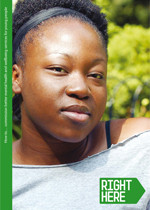Stage 1: Identifying needs
Most commissioning processes will begin by identifying the needs of the target population. There are several sources of information, produced by Right Here’s partners, which provide useful evidence about what young people want and need from mental health and wellbeing services.
The following suggestions may also help you to consider how to identify and gather information about the mental health needs of young people aged 16–25 in your locality. They also highlight some things that young people have told us are likely to put them off.
Turn-ons
- Commissioners engaging with young people where they are, rather than expecting young people to come to them. (Try to develop relationships with local youth agencies and use their expertise in youth participation to inform needs assessments.)
- Recognising that young people may prefer to express their views to other young people. (Consider commissioning young people to undertake research with other young people about their experiences of services locally.)
- Respecting and listening to the views young people express, however challenging. (Work with Healthwatch to ensure that young people can express their views through this route as well.)
Turn-offs
- Expecting young people to respond to formal consultation exercises.
- Professionals dismissing or trivialising the concerns young people raise.
- Amalgamating young adults’ needs assessments with those for children – the needs of a 20-year old are considerably different from a 12-year-old. (Ensure your Joint Strategic Needs Assessment (JSNA) includes a specific focus on 16–25s in your mental health needs assessment.)
- Using jargon or medical terminology in consultation and needs assessment processes.
- Acting in an overly formal manner – it can appear intimidating.
